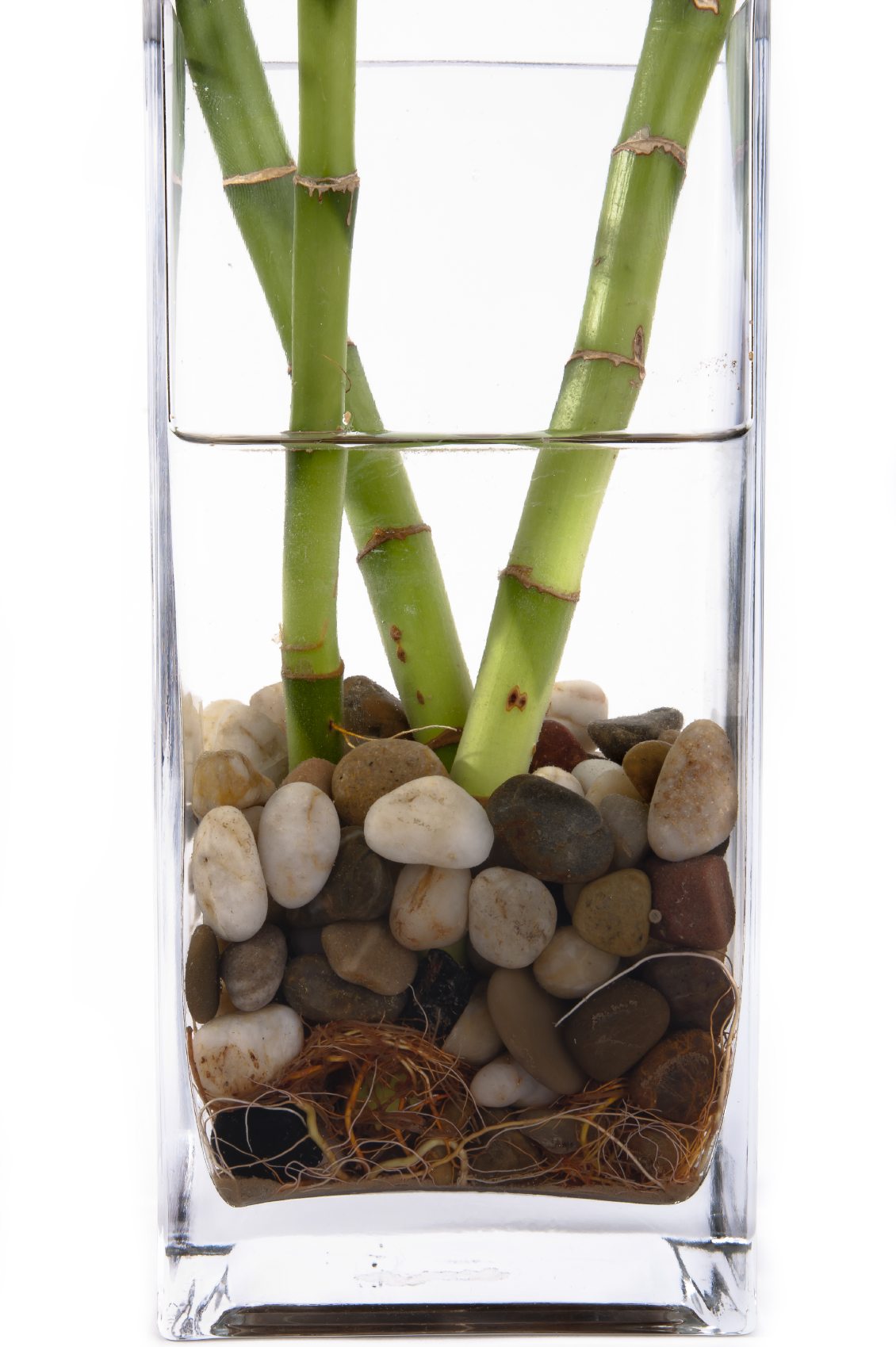Lucky Bamboo Plant Care: How To Keep A Lucky Bamboo From Rotting


Lucky bamboo isn’t actually bamboo at all, although it resembles the kind pandas eat in China. This popular houseplant is a member of the Dracaena family, oftentimes grown in water, and sometimes soil, and is said to bring good fortune to the household. Rotting lucky bamboo plants seem a decided sign of ill fortune. But preventing rot in lucky bamboo is not too difficult if you are attentive to the plant and act quickly when you see a problem with the plant’s roots. Read on to learn how to keep a lucky bamboo from rotting, especially when it’s grown in water.
Rotting Lucky Bamboo Plants
The lucky bamboo is a little green plant with one or more slender stems that grow roots on the lower end and leaves on the upper end. These are the plants sold in clear vases filled with water and pretty rocks, so that you can watch the roots grow. The key to keeping a lucky bamboo from rotting is to provide enough water, but not too much. All the plant’s roots should be below the lip of the glass container and in water. Most of the stems and all of the leaves should be above the lip and out of water. If you fill up a tall glass of water and plunk in the lucky bamboo plant, the stem is likely to rot and turn yellow. Likewise, if the roots outgrow the glass and you don’t prune them, the roots are likely to turn gray or black and rot.
How to Keep a Lucky Bamboo from Rotting
Good lucky bamboo plant care will go a long way toward keeping a lucky bamboo from rotting. If the plant currently lives in water, not soil, it is essential that you change the water at least every three weeks. Use bottled water, not tap water. Lucky bamboo plant care also involves careful placement. These plants require sun, but not too much. Lucky bamboo likes indirect light but not direct sun, so position it on a west-facing window sill for best results. If you see roots that are slimy or dark, snip them off with a nail scissor. If the roots grow mushy, cut off the plant stem above the roots. Treat the plant as a cutting and leave it in water to propagate another plant.
Sign up for the Gardening Know How newsletter today and receive a free copy of our e-book "How to Grow Delicious Tomatoes".

Teo Spengler is a master gardener and a docent at the San Francisco Botanical Garden, where she hosts public tours. She has studied horticulture and written about nature, trees, plants, and gardening for more than two decades, following a career as an attorney and legal writer. Her extended family includes some 30 houseplants and hundreds of outdoor plants, including 250 trees, which are her main passion. Spengler currently splits her life between San Francisco and the French Basque Country, though she was raised in Alaska, giving her experience of gardening in a range of climates.